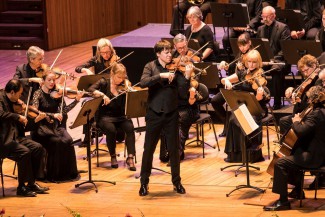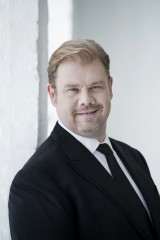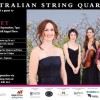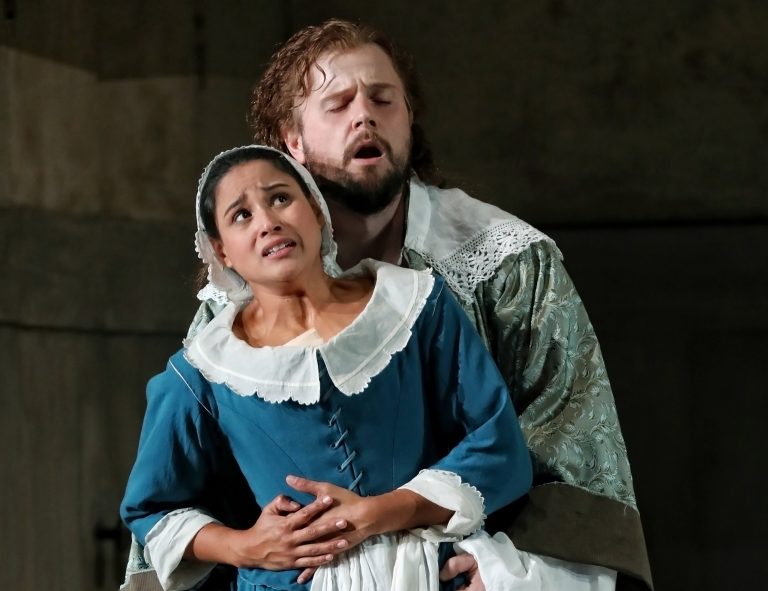Concert Review: Academy of St Martin In The Fields Led By Joshua Bell/ Concert 2
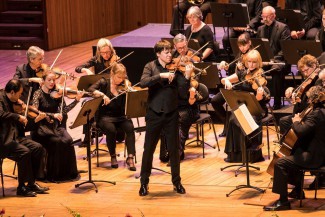
The Academy of St Martin in the Fields led by Joshua Bell
Concert Hall, Sydney Opera House
April 23, 2017
The second of two Sydney concerts by Joshua Bell and the Academy of St Martin in the Fields featured Mozart’s Symphony No 25 in G minor, K 183, his Violin Concerto No 4 in D major, K 218 and Beethoven’s Symphony No 3 in E flat, opus 55, Eroica. It was a dramatically different soundscape to the richly Romantic repertoire of the previous evening. The mood in the flower festooned Concert Hall of the Sydney Opera House was altogether more urbane than the dizzying flourishes of the previous evening.
The focus of the second concert was directed more to the collective skills of leader and ensemble with two orchestral works enveloping a concerto. Mozart’s Symphony No 25 has become something of a popular badge of honour for the ensemble after it recorded the first movement under its then leader Sir Neville Marriner for the soundtrack of Miloš Forman’s 1984 movie Amadeus. Marriner, like Bell was a violinist, but soon gave up playing in favour of conducting. Whilst many soloists would leave the overall responsibilities of the ensemble to the conductor, the indefatigable Bell chooses to direct from his position as a player. Bell exudes a quiet charisma; his lead and playing are flawless, impassioned and inspirational.
Playing his 1713 Huberman Stradivarius violin with an 18th century François Tourte French bow, Bell led the orchestra into a furious opening of the symphony with its Allegro con brio, typical of the Sturm und Drang (Storm and Stress) writing of the times. The musicians created a glow with the lavish (for the time) orchestration which included four horns, two oboes and bassoons with strings. The restlessness of rapid syncopation, dramatic changes in volume and leaping melodies were performed with expert cohesion. The Andante was gentle and restrained in contrast, providing a foil for the nervous energy of the outer movements; the Menuetto with its G major trio sumptuously performed by the soloists of the wind section.
Mozart’s fourth violin concerto has a reputation for calling on the bravest of hearts. It might have been stepped up from Mozart’s original version to suit Antonio Brunetti, a skilled court violinist. It was also written at a time (1775) when Mozart was disillusioned with musical life in the court and the church of the Price-Archbishop of Salzburg. Although he continued to fulfil the obligations of his wages, he turned his attention to secular music honing his skills in instrumental writing and the violin in particular. Between April and December 1775, he composed five concertos for violin and orchestra, the Concertone for Two Solo Violins (in 1774), two serenades, the Serenata notturna k239, and numerous divertimenti.
Handing over the role of Concertmaster to Principal First Violin, Harvey de Souza, Bell took the stage as soloist. As we commented after yesterday’s performance, the debate over whether an elite ensemble needs a conductor, is well stoked by observing Bell leading the ensemble as a soloist. In his words, “If I could, I would do every concerto without a conductor.”
Bell’s playing was sweet and incisive replicating the opening theme adorned with arpeggios and trills introduced by the orchestra. The stand-out aspects of this movement were the incandescent cadenzas that he had written himself. There was a change of mood as Bell and the ensemble explored the lyricism of the Andante cantabile before romping through the various dances of the final Rondeau.
Beethoven’s Symphony No 3, Eroica is both monumental in construction and in its place in the symphonic canon. The ASMF is not the first chamber ensemble to perform this symphony. Roger Norrington and Nikolaus Harnoncourt amongst others, have recorded it with chamber ensemble alongside performances by larger forces like the Berlin Philharmonic with Sir Simon Rattle. Completed in 1804, the Eroica has its connections with Napoleon, but has a deeper personal resonance for Beethoven in the sentiments expressed in the Heiligenstadt testament as he realised with horror, his encroaching deafness.
It was a commanding performance, with the smaller ensemble giving the customarily complex textures a pleasing translucency. The sound was nonetheless resplendent, filling the Concert Hall. The ensemble navigated modulations, varied the tempi and the fugal themes as one. Their Marcia funebre was filled with horror, reflecting what Beethoven might have felt at the time, but followed by the optimism of the Scherzo and the Prometheus inspired Finale, Bell and the ASMF shared with us Beethoven’s life- affirming acceptance of fate and audience was on its feet!
Shamistha de Soysa for SoundsLikeSydney©

